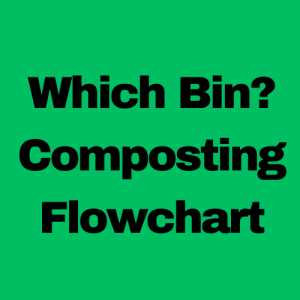Compost Home Composting
Home Composting
Composting garden and kitchen waste is a great way of helping the environment with the added benefit of producing a free soil conditioner for your garden.
So, instead of filling your dustbin with rotting food and garden waste, which can produce unpleasant odours, why not put it to good use. The compost you produce can then be mixed with your soil to provide nutrient-rich food product for your garden.
How does it work?
Effective composting provides an excellent environment for a variety of life. Bacteria, fungi and microscopic organisms share the bin with larger creepy-crawlies, such as beetles, ants and millipedes. They all play their part in transforming the waste matter into a rich soil enhancer.
Many people use a specially designed compost bin, whilst other prefer to use a compost heap. Compost bins are small and therefore suitable only for cool composting. This means that pernicious weeds, seeds and diseases won’t be killed off. For most people this is not a problem and a compost bin represents the most convenient and easy way to deal with most garden waste and certain food scraps.
Compost heaps can be as large or small as you like. Larger compost heaps or those that are well insulated allow hot composting, which means that weeds and seeds are ‘cooked’ to stop them from spreading. It can also kill plant diseases and pathogens. Large compost heaps need lots of material to work properly, so aren’t suitable for everyone.
Buying a bin & getting started
You can start composting at any time of the year, but spring is ideal. Firstly, choose a composter to suit your garden and lifestyle. Compost bins come in a variety of shapes and sizes, so do your research before you buy. We have a PDF flowchart to help you decide which compost bin would suit you best, click this PDF link to view or the box below.
Next, pick the perfect location for your bin. Select a sunny spot which is easily accessible, especially during the winter, for taking kitchen waste to two or three times a week (so maybe near a path) but not too close to the house. Smells shouldn’t be a problem but you don’t want it under the kitchen window.
You’ll need to prepare the ground, so make sure to fork the soil well before siting the composter to help the creepy crawlies find it. A bucket of compost from an active heap is the best thing to jump-start your new bin!
What can I put in my compost bin?
The key to effective composting is getting the right balance between ‘greens’ and ‘browns’.
- Greens – grass cuttings, tea bags, fruit scraps and vegetable peelings
- Browns – dry leaves, scrunched-up newspaper, garden prunings and eggboxes
The green items contain bacteria and nitrogen to help kick-start the composting process. Too many greens in the compost bin will make the waste too moist and stop air from circulating amongst the compost. Not only will this slow the composting process down, but it could lead to unpleasant odours. If your bin is sludgy or contains lots of damp clumps, you need to add more browns and ensure the compost is well ventilated.
Browns tend to be drier and contain plenty of carbon, vital for balancing the composting process. Whilst too many browns makes a great home for ants and woodlice it tends to compost very slowly. So, add a few extra greens to the mix to speed up the composting process.
The ideal compost bin will contain a balance of greens and brown and will be home to a mix of creepy-crawlies. The mixture should be slightly moist and contain air pockets.
What doesn’t belong in my compost bin?
The following should never be put in a compost bin as it may lead to unpleasant odours or encourage pests:
- Cooked food
- Meat
- Dairy products
- Diseased plants
- Pet faeces
- Nappies
- Anything which doesn’t biodegrade (e.g. plastic, glass, metals)
Dealing with large volumes of grass or leaves
Making the most of your grass clippings
During spring and summer, lawns tend to grow at a frantic rate and produce an abundance of grass clippings, which, if used correctly can be great for composting. Grass clippings are the definitive “greens” – low carbon, high nitrogen, fast decaying and with no structure. Three ways to make good use of your grass clippings are:
- composting
- mulching
- grassboarding
Composting grass clippings
Here are some top tips to avoid problems composting grass clippings:
-
- spread the clippings out and let them dry for a few days before you use them
- add thin layers of clippings and mix them with a high carbon material such as shredded paper, straw or brown corrugated cardboard, torn into small pieces
- keep an eye on the heap and if it starts to smell stir it up with a compost aerator or a fork
Mulching with grass clippings
Mulching is the spreading of material (usually organic) onto bare soil or around a plant. It helps to suppress weeds, conserve moisture and in some cases, such as grass clippings, slowly feed the soil. Keep the layers thin – at most an inch of clippings at a time – to make sure water and air are still getting through to your plants.
Grassboarding
Spread the grass fairly thinly in your compost bin (roughly just an inch or two deep in each layer) and add cardboard between each layer. The compost produced is completely homogenous and weed-free. The cardboard also stops the clippings getting soggy as it breaks down.
Be aware
There are at least two long lived herbicides that do not fully break down in the composting process – clopyralid and picloram – these are sold under a number of trade names. Do not mulch or incorporate into the soil grass clippings that have been treated with any herbicides. This includes weed and feed combinations. There is a good chance the herbicide will be active and damage the plants you are mulching.
Leafmould
Too many autumn leaves can be difficult to manage in your compost bin and so making leafmould with any excess is the perfect solution! Leafmould has very similar properties to peat but has the benefit of being a renewable resource. Like compost, it will improve the physical structure of your soil but leafmould is actually very low in nutrition. All the nutrition is absorbed back into the tree before the leaves fall.
Making leafmould is a very simple process, although not particularly speedy because unlike home composting it relies on the slower action of fungi rather than the fast acting, heat generating bacteria. Watch our video ‘making leafmould from autumn leaves’ for further guidance and uses.
Need more information?
Master Composters are volunteers based throughout the county ready and willing to help you and your community, school or workplace find out more about how to reduce waste through composting. They are experts in all things compost and can help you:
- Choose the right bin for your garden and lifestyle
- Get started composting
- Overcome any problems you have, and help you get back on track with your existing compost bin or heap
Master Composters are available for Leicestershire events, can provide talks / workshops for community groups and schools, and can provide one-to-one advice on composting to Leicestershire residents free of charge. If you would like to request the support of a Master Composter, have a composting query or need some information about the type of support available, please contact us at wasteprevention@leics.gov.uk or call 0116 305 7005.
Also in Compost Sub menu
Read More about Home Composting
You can see a wide range of composting methods, including wormeries and food waste digesters at the Compost Demonstration Site at the Stokes Wood Allotment in Leicester.
Composting experts are regularly on hand to guide you around, answer any questions you may have and help advise you how to get started composting at home.
To find out more about the site, or when a composting expert will next be on site to give personalised advice, call 0116 305 7005.
A demo site guide is also available at Carryoncomposting.com











